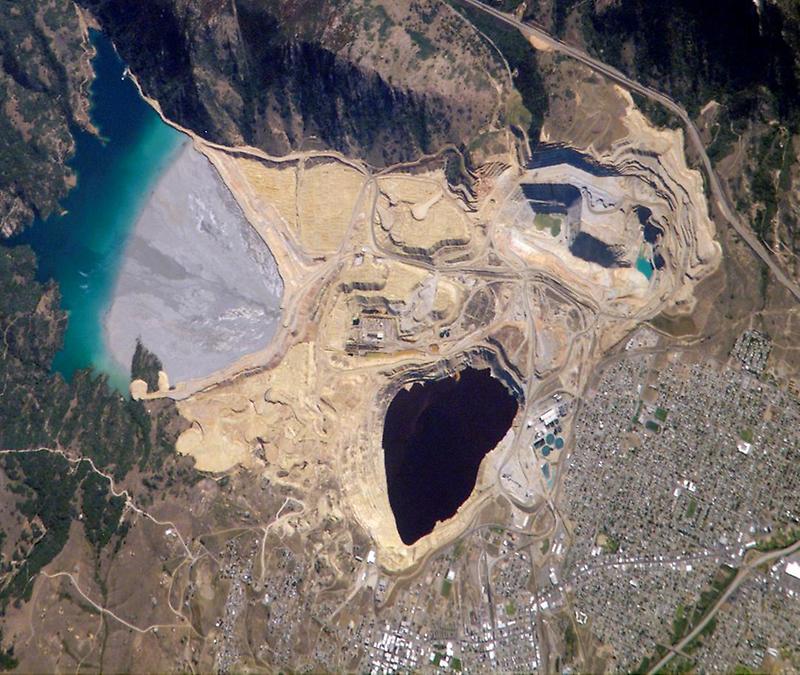Butte, Montana#

Well before World War I, however, copper mining had spurred the creation of an intricate complex of underground drains and pumps to lower the groundwater level and continue the extraction of copper. Water extracted from the mines was so rich in dissolved copper sulfate that it was also "mined" by chemical precipitation for the copper it contained.
In 1955, copper mining in the area expanded with the opening of the Berkeley Pit. The mine took advantage of the existing subterranean drainage and pump network to lower groundwater until 1982, when a new owner suspended operations. After the pumps were turned off, water from the surrounding rock basin began seeping into the pit.
By the time an astronaut on the International Space Station took this picture on 2 August 2006, water in the pit was more than 275 m (900 ft) deep. This image shows many features of the mine workings, such as the terraced levels and access roadways of the open mine pits (gray and tan sculptured surfaces).
A large gray tailings pile of waste rock and an adjacent tailings pond appear to the north of the Berkeley Pit. Color changes in the tailings pond result primarily from changing water depth. Because its water contains high concentrations of metals such as copper and zinc, the Berkeley Pit is listed as a federal Superfund site.